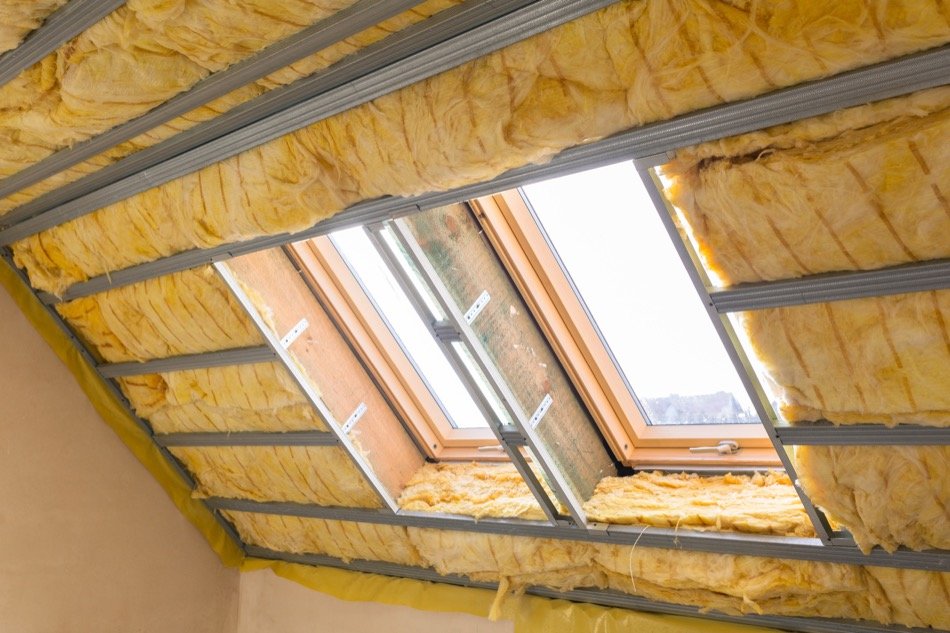Important Considerations When Re-insulating a Home
Posted by EdmontonRealEstate .ca on Monday, October 8th, 2018 at 8:39am.
 More homes today are being designed from top to bottom inside and out with maximum energy efficiency in mind, and home insulation is a large part of achieving energy goals. However, many homes—particularly older ones—are still insulated with older materials that are far less efficient that options today. The good news is that by re-insulating the home, it's likely that homeowners can save money through lower energy costs and recoup their investment in just a few years.
More homes today are being designed from top to bottom inside and out with maximum energy efficiency in mind, and home insulation is a large part of achieving energy goals. However, many homes—particularly older ones—are still insulated with older materials that are far less efficient that options today. The good news is that by re-insulating the home, it's likely that homeowners can save money through lower energy costs and recoup their investment in just a few years.
Determining Whether Home Re-insulation is Necessary
In order to determine if a home needs to be re-insulated, it will be necessary to identify areas in the home that need sealing. Also, an inspection will need to be performed in various spaces like basements, attics, walls and floors to determine the type of insulation currently installed. It's also necessary to determine whether the insulation is properly installed and its actually thermal resistance, which is commonly called R-Value.
These processes can be performed by an experienced home energy auditor, who can do an insulation check during a whole-house energy assessment. Those wanting to take advantage of home renovation tax credits for 2018 will need to invest in a home energy audit before making improvements to qualify for the rebate. There will also be a post-improvement inspection required. Fortunately, the $1600 credit can offset these costs.
Common Types of Home Insulation Options
There are many types of home insulation on the market, each with their own set of benefits and price points. Here are the most common types of home insulation utilized today.
- Batt and Roll
- Concrete Blocks
- Foam Boards
- Insulating Concrete Forms
- Loose Fill and Blow Insulation
- Radiant Barriers
- Rigid Fibre Board
- Spray Foam
Once an auditor or insulation professional has determined the type currently installed, they can help determine the right kind of insulation for the Bonnie Doon home and an appropriate R-value to increase energy efficiency and home comfort.
Home Insulation R-Values
R-values are the way manufacturers and testing facilities identify an insulation materials's thermal resistance concerning conducted heat flow. These ratings are created based on factors such as the thickness and density of the insulation, the materials utilized and its ability to withstand temperature changes and moisture accumulation. While installing additional insulation or re-insulating the entire home, there are some important factors to keep in mind.
More is often better, as additional thickness increases R-value. Yet, certain types of loose material insulation can actually settle and reduce the density due to its own weight. So, with loose-fill materials more won't actually change the R-value due to increased thickness. With this in mind, it's wise to contact a local insulation contractor to determine the type of materials and R-value is best for the home.
Cost Versus Value When Re-insulating Homes
Home insulation costs can range anywhere from a few hundred dollars to a few thousand depending on the home's size, how much insulation is needed, materials chosen and whether or not a professional is performing the installation. A handy tool is this Insulation Investment Costs and ROI Calculator. One can easily get a fairly accurate estimate of initial cost, energy savings and ROI potential, so they can know what to expect and also whether their contractor is giving them a fair deal. Beyond saving energy and increasing home comfort, re-insulating the home can also be a selling point for those potentially looking to move in the future.
Because certain types of insulation materials can be risky and challenging to install, it's best to contact a home insulation professional to ensure the job is done right and prevent injury with a DIY project.

